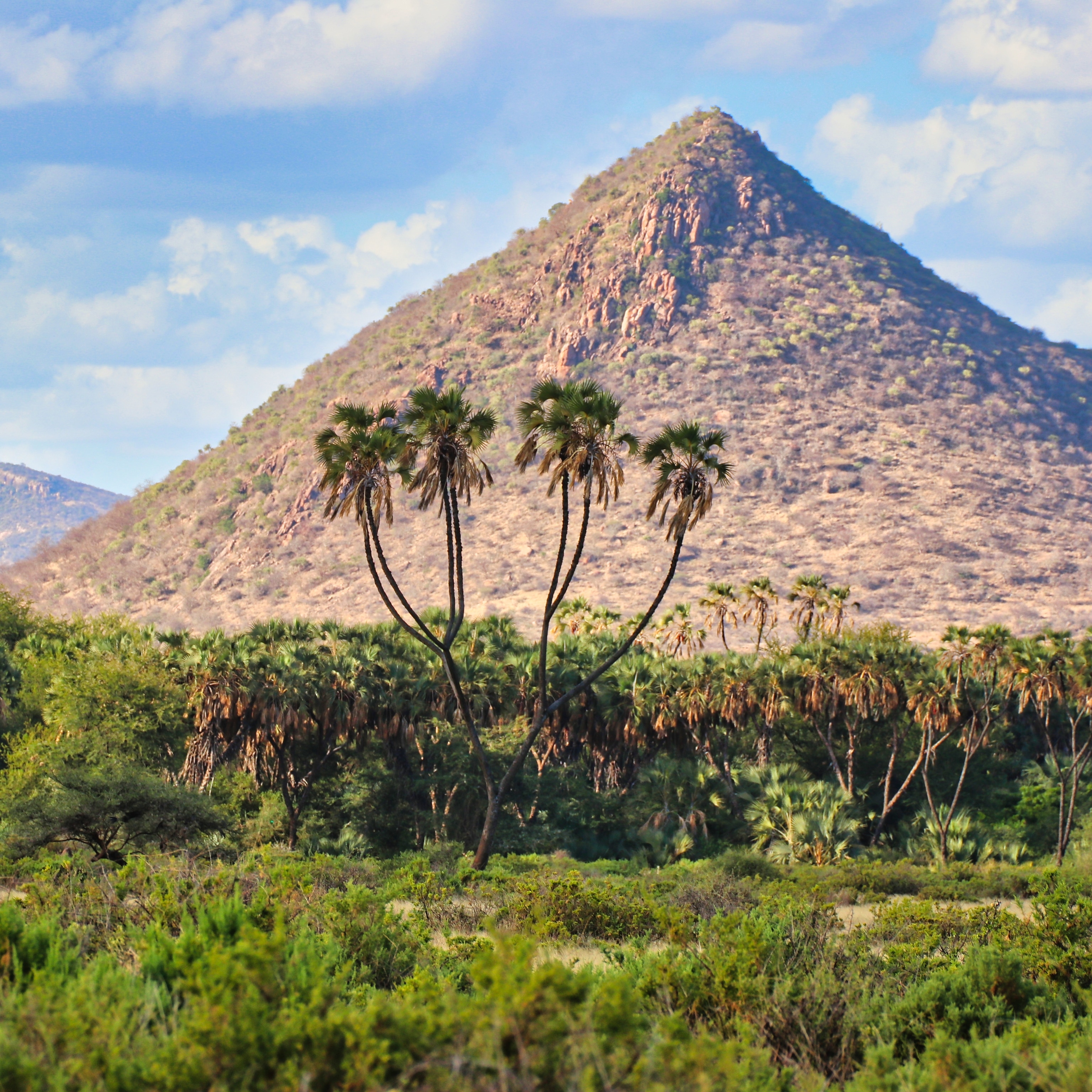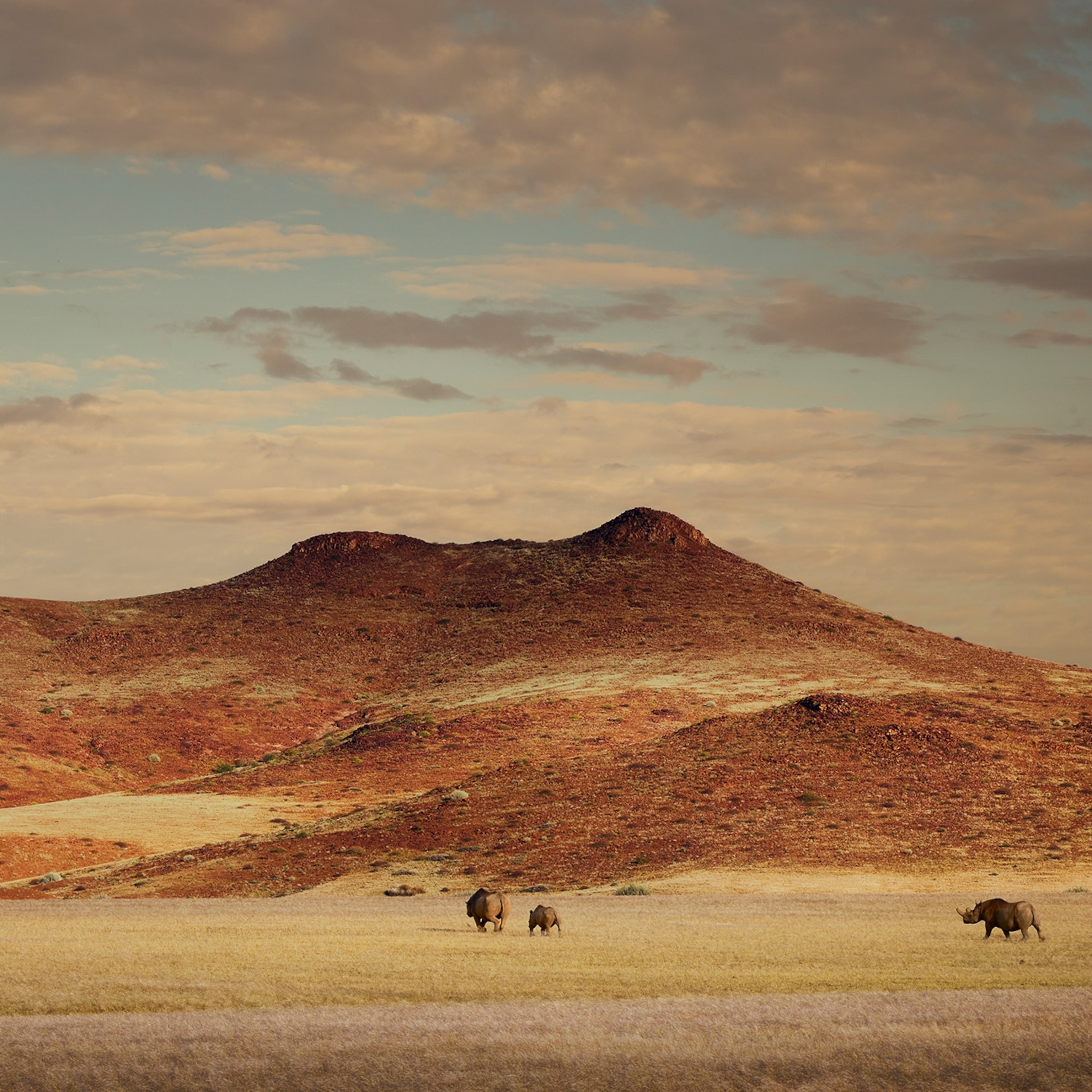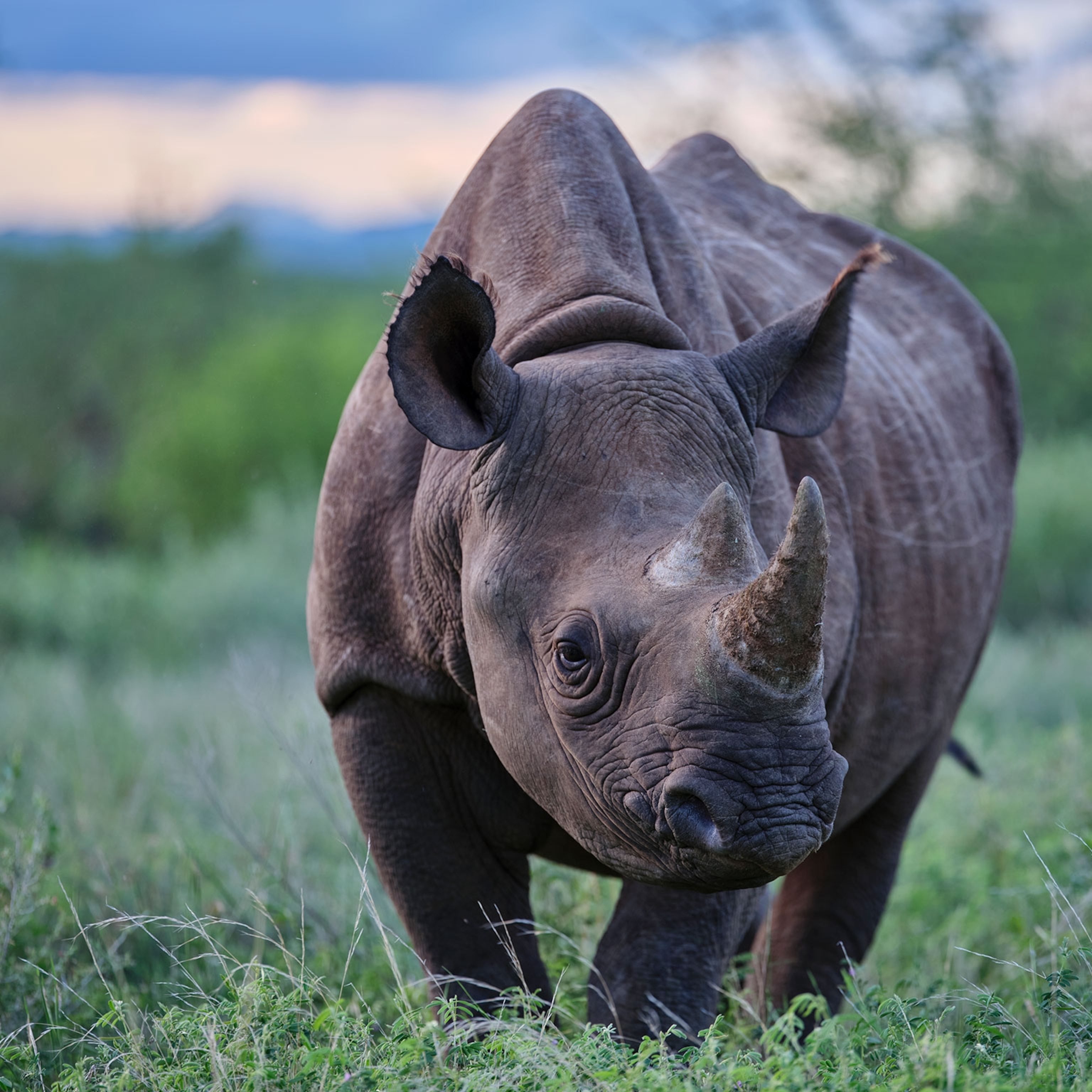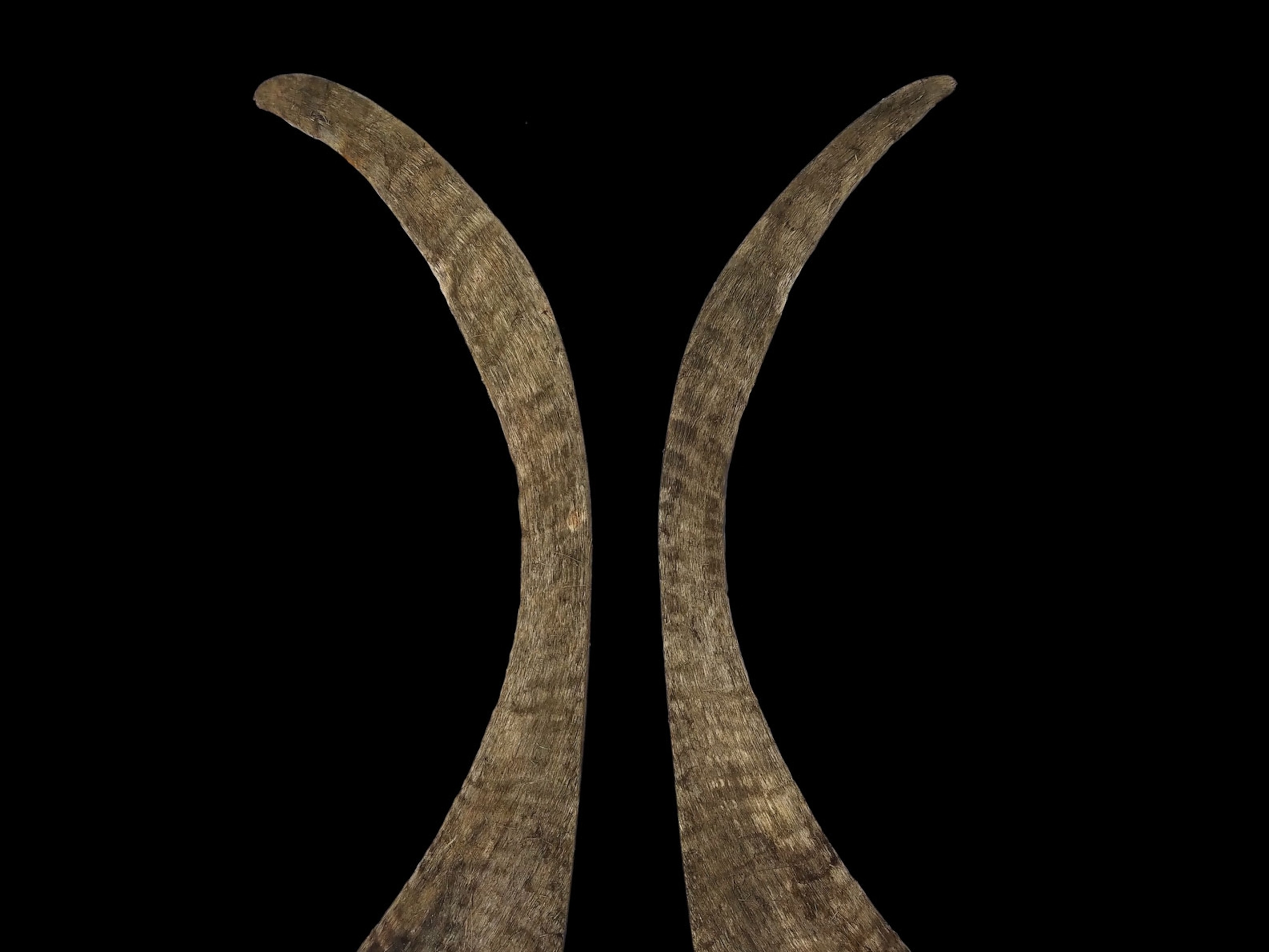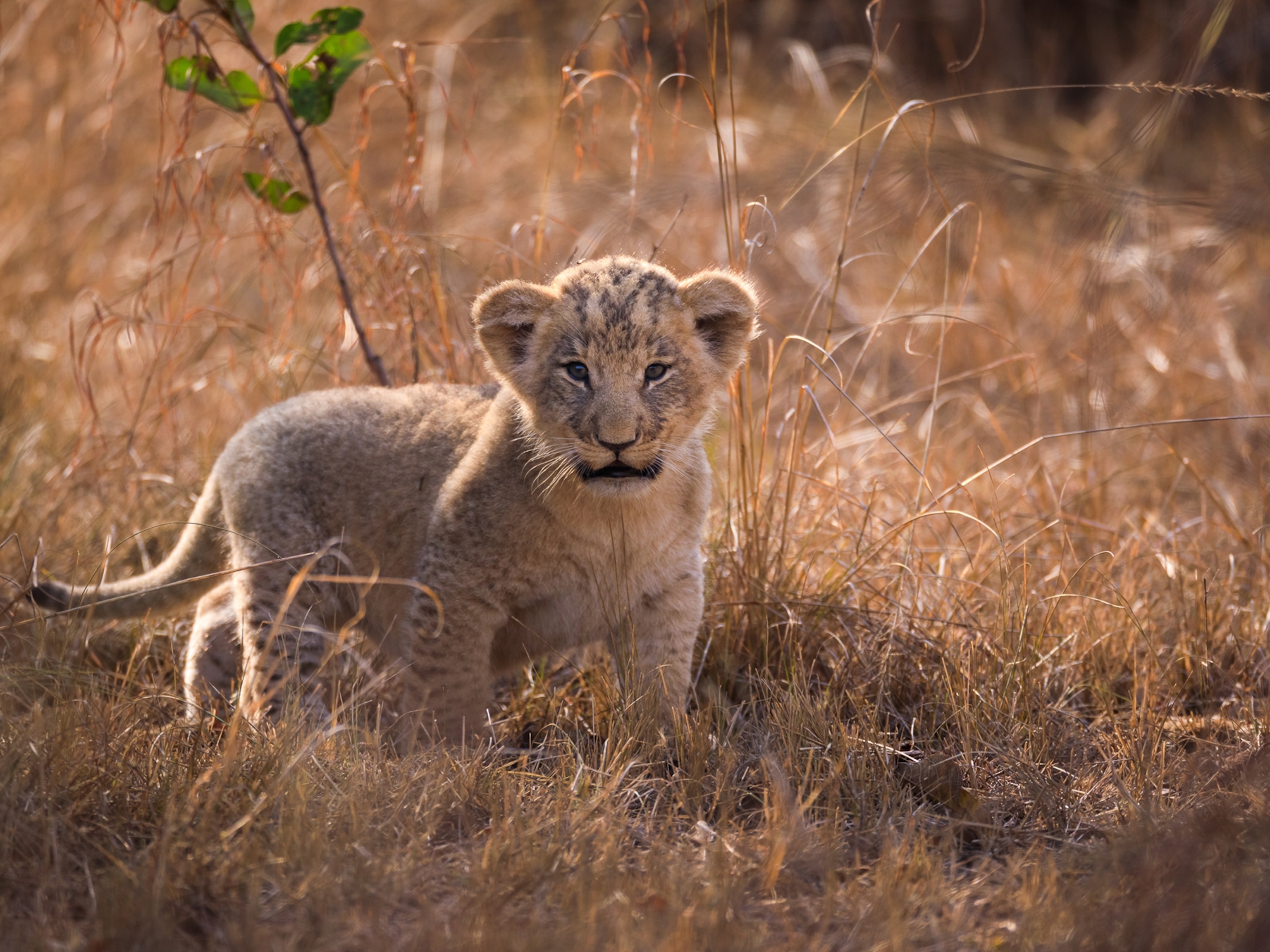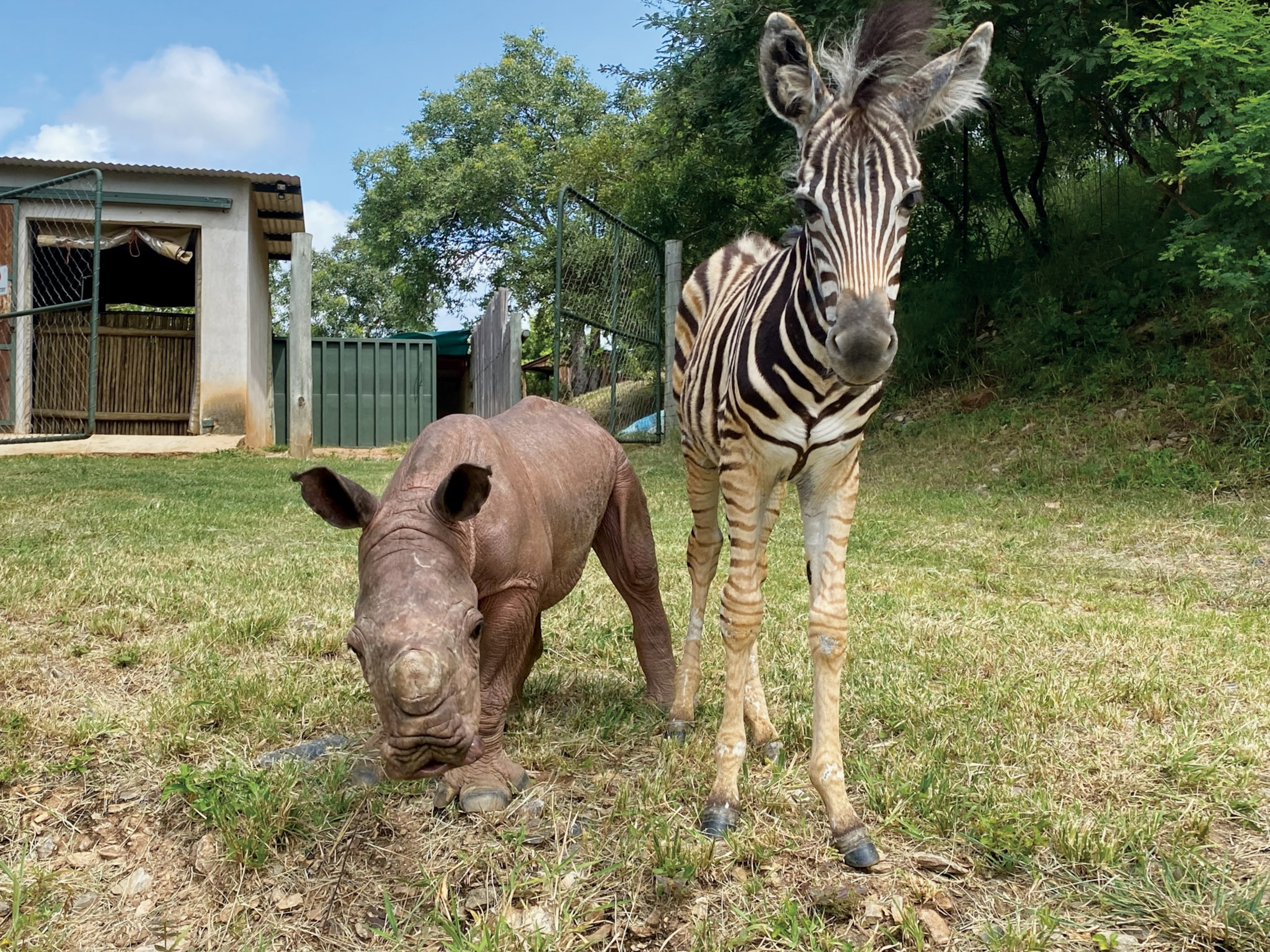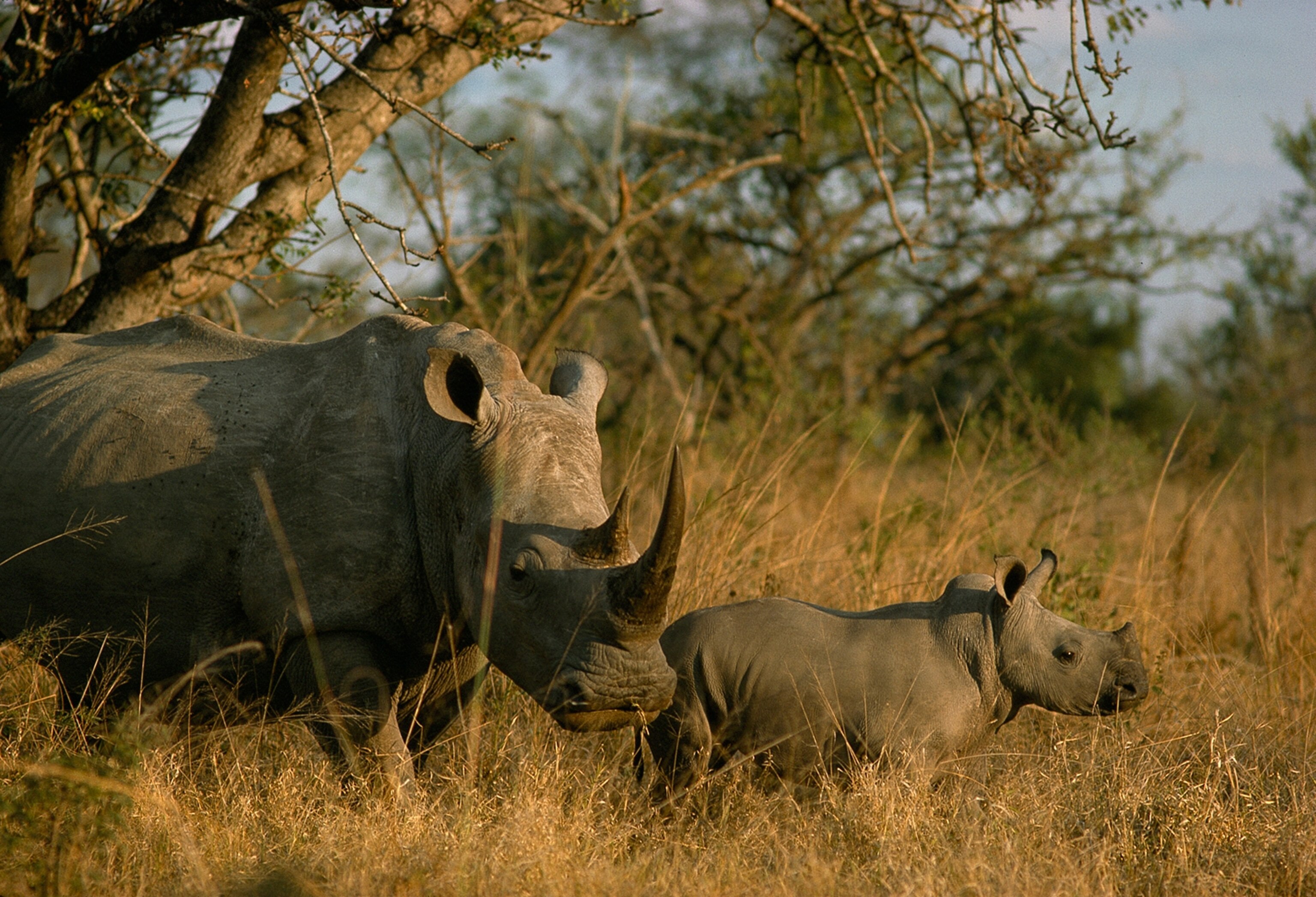
Legalizing Rhino Horn Trade Won't Save Species, Ecologist Argues
What can South Africa's rhino horn trade proponents learn from experiences with the South American vicuña?
Southern white rhinos could go extinct in the wild in less than 20 years.
Conservation efforts saved the species from an earlier brush with extinction. There were no more than 50 white rhinos in South Africa at the end of the 19th century. Today South Africa holds nearly all of Africa's estimated 20,135 white rhinos.
But more than 1,215 were poached for their horns in 2014. A similar number were killed in 2013. The animals are expected to be in net decline by next year.
And yet in the lead-up to the next big meeting of the Convention on International Trade in Endangered Species of Wild Fauna and Flora (CITES), to be held in Cape Town in October 2016, South Africa is expected to push hard for legalization of trade in the horns of southern white rhinos.
In Vietnam, among other Asian nations, powdered rhino horn is said to treat fevers and cure cancer, although no scientific studies exist to support such beliefs.
A legal trade, proponents argue, would reduce incentives for poaching of wild rhinos and the illegal trade of their horns. People who are pro-trade view rhino horn as a renewable resource because the horns gradually regrow after they're cropped.
The idea is that rhinos would be intensively managed under farmed, or at least semi-captive, conditions, and that the animals would be sedated while their horns are harvested. Profits from the sale of horns would be invested in maintaining "viable, free-ranging" populations in "natural habitat," as South African trade advocate Michael 't Sas-Rolfes and others envision—although they leave the quoted terms "open to interpretation." This overall approach falls under the label "sustainable use."
Many rhino horn trade advocates tout the Andean vicuña—an iconic South American mammal in the camel family that's related to llamas, alpacas, and guanacos—as an example of successful conservation through sustainable use. The vicuña has been valued for thousands of years for its soft, fine wool.
Excessive hunting for European markets drove vicuñas to the brink of extinction in the 1960s. The animals were usually shot and the fleeces sheared off their carcasses.
In the early 1970s, CITES—which regulates the global wildlife trade—and the countries where the vicuñas range in the wild took measures that included a ban on trade in their wool, putting them on a path to recovery. By the 1990s, their numbers had rebounded to more than 200,000 (most of them in Peru), and regulated legal trading in wool resumed.
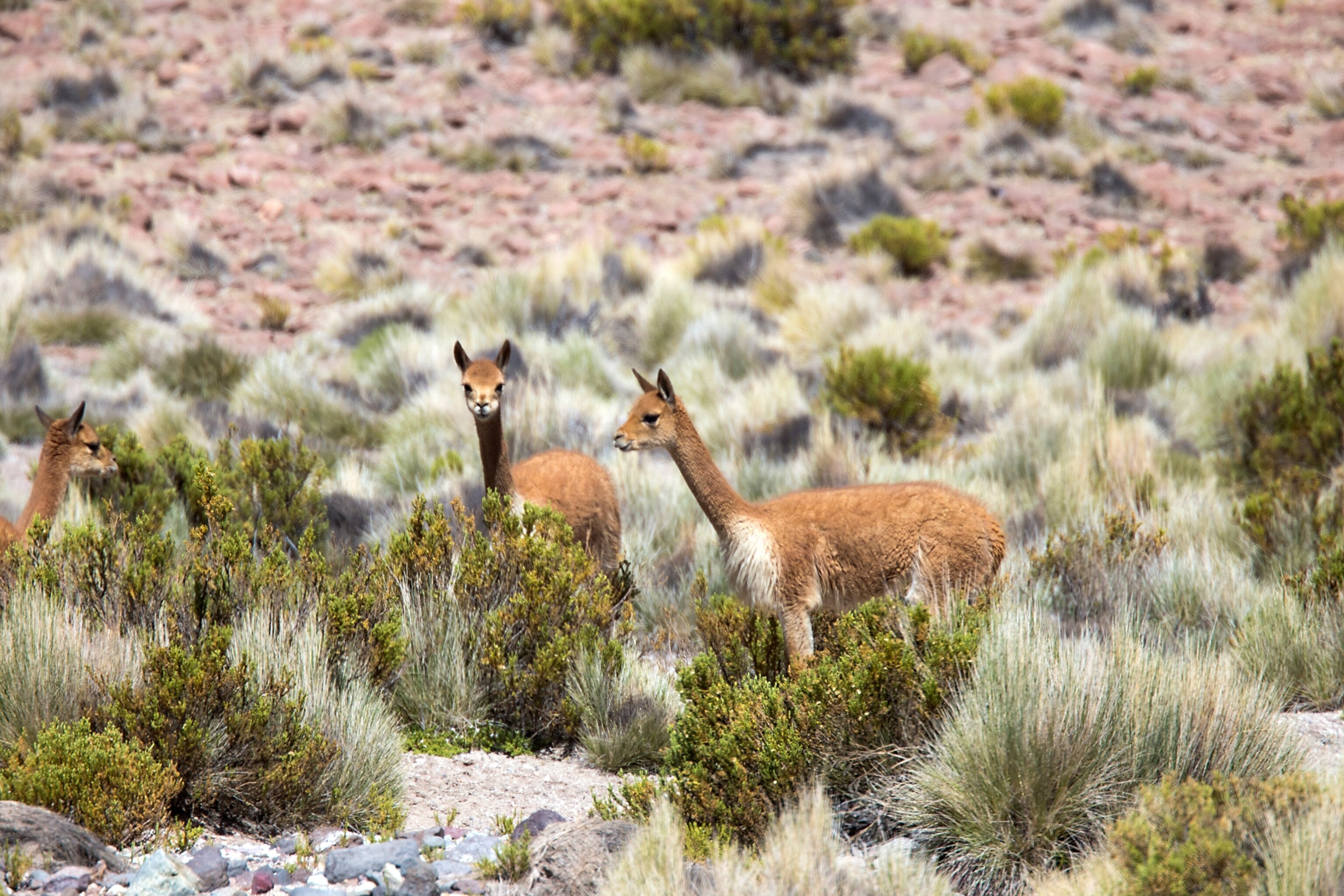
Back then, ecologist Cristian Bonacic, of Pontifical Catholic University of Chile, in Santiago, was at the forefront of developing best practice guidelines for sustainable, ethical use of vicuñas.
Bonacic, a doctor of veterinary medicine, is a leading expert on South American camelids, the taxonomic group that includes vicuñas, with more than 30 years of research experience on wild populations. Because of his work with Oxford University's Wildlife Conservation Research Unit, vicuña management practices were aimed at reducing stress during capture, handling, and shearing.
Today, wild vicuñas number more than 340,000 in the Andean highlands of Peru, Bolivia, Argentina, and Chile, but once again, poaching and illegal trading are threatening them.
Bonacic says that although inherent differences between rhinos and vicuñas mean that "sustainable" management practices of the two species would differ in detail, there are broad parallels between the two—and that lessons learned over the years with vicuñas apply to rhinos.
Speaking from his university office, Bonacic explains his recent shift away from the notion of sustainable use of wildlife, why a legal trade in vicuña wool has led to more—not less—poaching, and why he thinks a legal trade in rhino horn could be catastrophic for the species.
Tell us about the "sustainable use paradigm" and how it shaped your conservation vision more than 20 years ago.
According to the sustainable use paradigm, if wildlife can be used, it can be saved. This means that farming of wild animals and their conservation are explicitly interlinked. The idea was that if you can provide income to local communities from sustainable use of a wild animal, this will exclude illegal poaching. And indeed, the trend in the '90s did prove this approach successful in a number of places with a number of species. In Chile, we followed this paradigm like a religion.
But the world has changed, and many indigenous communities are now much more globalized. There are many more roads, many more exchange routes, including the Internet, which allows you with one click to buy something banned in one country and not in another. The romantic view that local communities can use an animal sustainably is simply no longer feasible in the 21st century.
What was the Vicuña Convention?
Vicuñas nearly went extinct from overhunting in the wild in the 1960s. In response, CITES placed a 30-year moratorium on trade in vicuña wool. From 1960 to 1980, there was no trade, but in the 1990s we reinitiated discussion about sustainable use of vicuñas under the Vicuña Convention—a specific agreement among the countries where the vicuña naturally occurs.
The agreement was for vicuñas to be sheared alive and returned to the wild, with benefits from the sale of fiber going to local communities. This plan required maximum cooperation of government agencies, local communities, and international conservation organizations like the IUCN (International Union for Conservation of Nature).
Importantly, the trade in wool wouldn't reopen until after vicuñas had recovered in the wild. That didn't happen at the same pace in each of the vicuña range countries, or even within each country, with some populations remaining in jeopardy.
This is something that's happening for rhinos and elephants and other wildlife in Africa and presents a major challenge to "sustainable use"—that is, you can't guarantee that by starting a program of trade in a place where the animal is in abundance, you won't drive the animal to extinction through illegal use where they're still in danger.
While the vicuña populations in northern Chile are currently out of danger of extinction, the populations in the south are not.
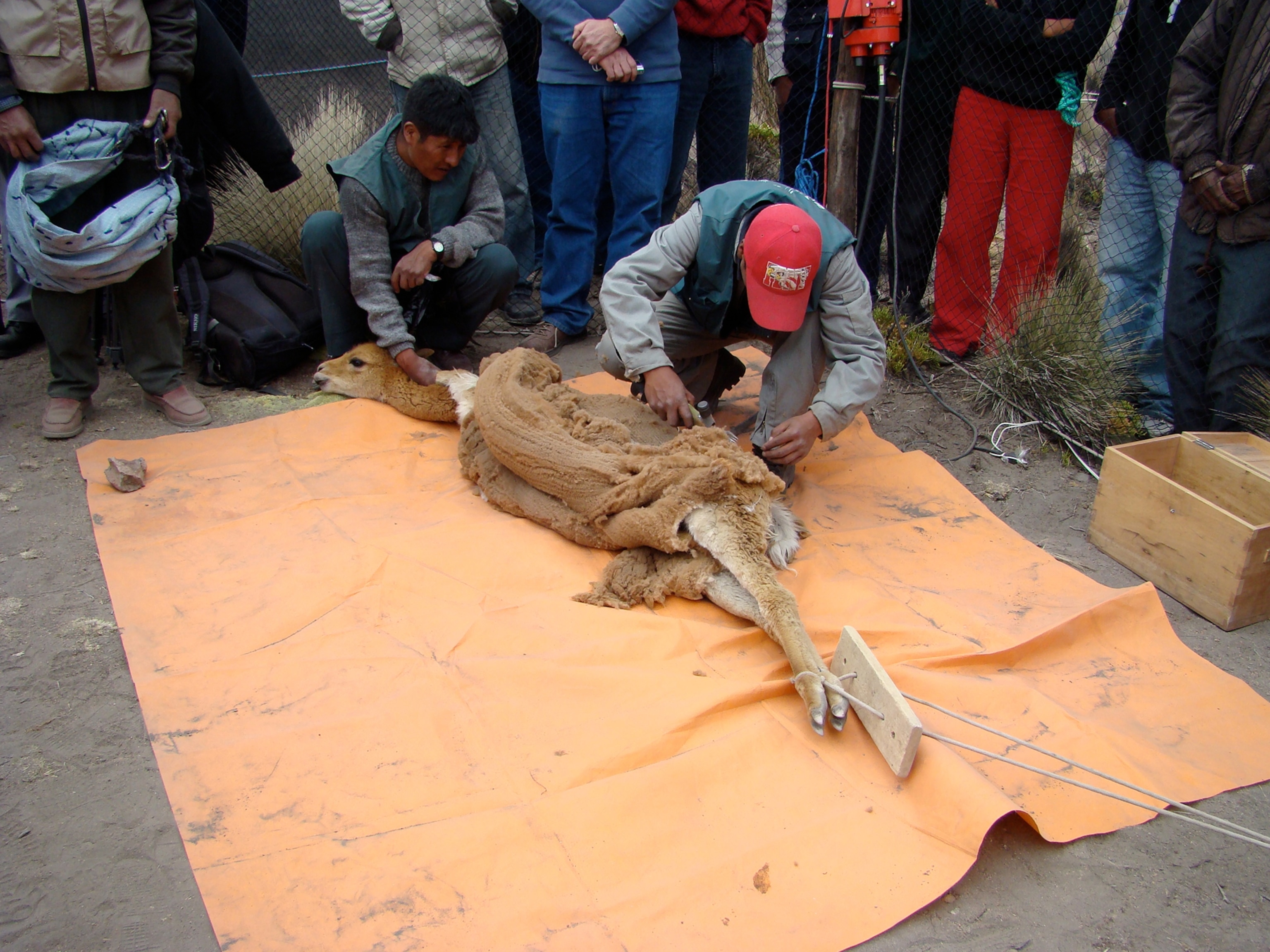
When did trade in vicuña wool begin again?
In 1997 at the CITES 10th Conference of Parties, in Zimbabwe, Peru was authorized to sell three tonnes [3.3 tons] of stockpiled vicuña fiber and develop trade in raw fleece. This marked the reopening of an international trade in wool sheared from live vicuñas.
Tell us about vicuña capture and wool harvesting.
We know from years of research on the stress physiology of vicuñas and guanacos that any human contact can be stressful for a wild animal. From the very onset, I led research and developed management practices to avoid the animals suffering while they were captured and sheared.
Between 2001 and 2005 we initiated a project—through a grant from the European Union—in the north of Argentina to institute sustainable use for the explicit purpose of protecting wild populations of vicuña. If sustainable use could provide a means of generating income in communities, and if these communities could demonstrate that their local vicuña populations had recovered, then they would be entrusted to use wild vicuñas to supply the trade in fiber.
Essentially, our model was based on the traditional chaku, in which wild animals were rounded up and sheared by Inca servants more than 600 years ago, before the Spanish arrived.
We funneled vicuñas into a series of corrals, placing hoods on them and shearing them without sedation—as wouldn't be the case for rhinos when cropping their horns—then released them back into the wild within their same social structure. The system proved to be animal-friendly, with almost no mortality, and easy to implement by local communities on their own.
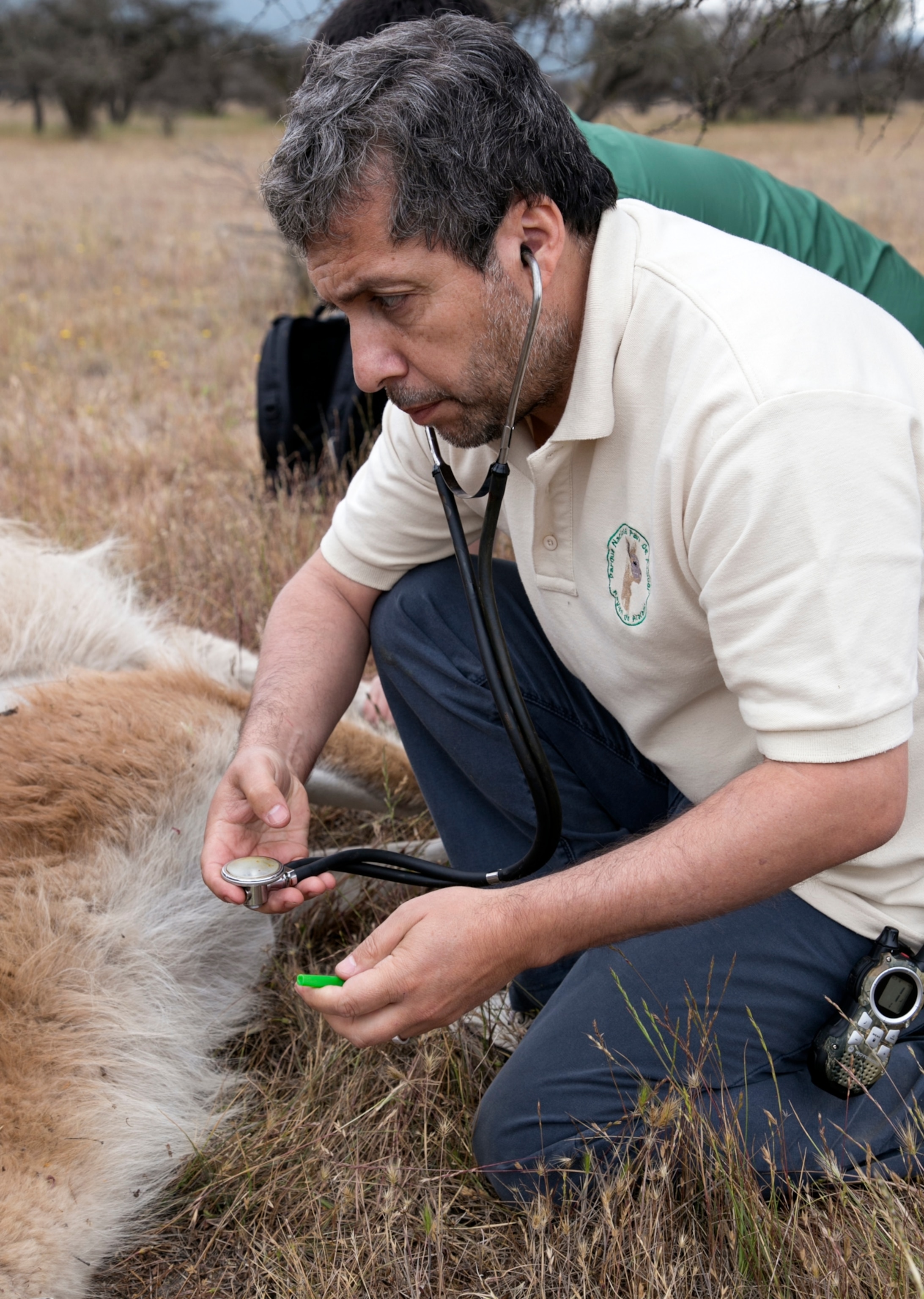
Prior to our efforts, Argentina had wild-sourced vicuñas for "farms," much smaller than Peru's "ranches," a pilot initiative that soon failed to prove to be socially and environmentally just. Some of Argentina's farms were established outside the natural distribution of the vicuña, and animals were even given to people who were not members of local communities.
Ranching was Peru's method of corralling vicuñas into large fenced plots, which can best be described as "semi-captive" conditions. This is a euphemism for saying that the animals were restricted in their movement and not really under proper care.
Our training of how to responsibly harvest wool from wild vicuñas was replicated in other communities across Argentina, and also in Bolivia and Chile. However, despite our best efforts, different conditions in different communities across vicuña range countries were instituted in such a way that we couldn't guarantee that animals were properly managed everywhere.
Poor welfare affects the population by adding a new mortality factor, impeding future captures and shearing, and hindering the economic viability of the program.
The concern now is that given low production volumes of wool, there's a shift from wild management—shearing of wild vicuñas as was agreed under the Vicuña Convention—to captive management schemes.
How do vicuñas fare under captive management?
Captive management, or farming, inevitably means artificial selection of certain vicuña traits, higher risk of disease transference—particularly when vicuñas and domestic animals are penned together—even lack of sufficient food because of overgrazing.
Sometimes, people put domestic llamas and alpacas in the same plots with vicuñas, creating hybrids that are not a desirable outcome of using wild animals.
There's impact on vicuña behavior from restricting habitat use, and even higher risk of predation on vicuñas when they're fenced and unable to flee a predator.
In other words, farming—unlike the chaku—leads to domestication, changes in health and behavior, and "genetic improvements," none of which are good for wild vicuñas.
Most of these problems are relevant to rhino farming.
Moreover, it seems to me that even less is known about rhinos than about vicuñas. The life history cycle of a rhino is different from [that of] a vicuña. The product—horn—that would be harvested from rhinos is crucial for their reproduction and behavior. What sort of conditions does a dehorned rhino require? How is it vulnerable without its horn? How is its mate competition and communication affected by dehorning or horn cropping? Can a farmed rhino ever be released into relatively more wild or free-ranging conditions?
We know from years of research that you can't shear vicuñas and then keep them penned, as they'll lose their adaptive response to cold, given that their fleece and mobility are what keep them warm. Isn't weaponry in the form of a horn part of a rhino's adaptive response, and if so, how do they compensate for its lack?
Why has a managed legal trade in vicuña wool not led to a decrease in poaching in the wild?
The availability and affordability of vicuña wool has ultimately not worked to protect wild populations from poaching. In fact, poaching has even increased over the past ten years in Peru, Bolivia, Argentina, and Chile.
The opening of the vicuña wool industry led to market expansion, which we did not anticipate. Increasing demand in turn led to more poaching, not less. Our worry now is that globalization could increase demand for vicuña wool beyond natural production limits, threatening wild vicuñas yet again. Already, illegal trade in vicuña fiber is creating tensions at the borders between vicuña range countries.
Vicuña poaching is not only increasing, it's also becoming more dangerous. In Chile, there are recent incidents of park rangers being killed by vicuña poachers. We've never had such a situation before. Chilean rangers don't use guns—they never had to.
The trade in vicuña wool also led to "stakeholder dominance," with Italian and Argentinean traders controlling the market. This means that benefits to traders are much greater than those enjoyed by local people of the Andean communities who source and supply the raw product. This gives communities less incentive to protect wild vicuñas.
Furthermore, as vicuñas are highly territorial, this affects how they distribute themselves across the landscape, which can incite poaching in one community's area by members of another community. This raises the complex issue of ownership.
Finally, the product—vicuña wool—is difficult to distinguish from the wool of guanacos and alpacas, which can be the same color as vicuña [wool]. We suspect that illegal trade is made possible by shipping vicuña wool out under the label of baby alpaca or baby llama wool. There's no easy way to verify the authenticity—or legality—of the product, as would also be the case for rhino horn, especially once it's ground up into powder.
Can you discuss other relevant experiences in Chile?
We shouldn't forget the example of the chinchilla, which is endemic to Chile. At the beginning of the past century, when chinchillas were in decline because of overuse for their pelts, someone took several pairs to North America and developed an entire new breed in captivity. Farming did not stimulate care for wild chinchillas, nor did it help avert their current near-extinction in the wild.
How can Chile's experience with vicuñas be a cautionary tale for South Africa?
There are a lot fewer wild rhinos than there were wild vicuñas at the start of the trade in their wool. If there's increased rhino poaching following trade legalization—even for a brief period and at a relatively low level compared with the present—this could be catastrophic for rhinos.
How would the profits of rhino horn trade be transferred to wild population recovery, ecosystem conservation, and local communities? How can responsible use of funds be guaranteed, given recent news of misappropriation of money gained from South Africa's elephant ivory sale in 2008?
What are the social benefits of using rhino horn as compared to vicuña wool? Would the world be promoting medical fraud by supporting rhino horn trade and usage?
Moreover, is it ethically acceptable to breed animals for the sole use of their horns for some so-called medicinal purpose? Societies should be prepared to ask themselves whether fashion and folk medicine can be allowed to drive species like vicuña and rhino to what could be their extinction in the wild in the 21st century.
Rhinos have a tremendous potential as a source of income if they're retained in the wild because of their huge tourist appeal. Rhinos attract far more ecotourism than vicuñas do, and are likely just behind elephants in that appeal.
I strongly believe that farming rhinos for horn production will drive the last specimens of a unique species into a scenario where they'll become more tame and less able to be part of the African ecosystem.
When you drive a magnificent animal away from its ecological relationships, you're taking away the whole meaning of wildlife conservation.
Follow Katarzyna Nowak on Twitter.
